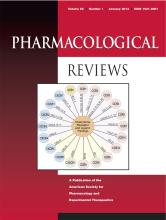Abstract
Optogenetic strategies to control genetically distinct populations of neurons with light have been rapidly evolving and widely adopted by the neuroscience community as one of the most important tool sets to study neural circuit function. Although optogenetics have already reshaped neuroscience by allowing for more precise control of circuit function compared with traditional techniques, current limitations of these approaches should be considered. Here, we discuss several strategies that combine optogenetic and contemporary pharmacological techniques to further increase the specificity of neural circuit manipulation. We also discuss recent advances that allow for the selective modulation of cellular function and gene expression with light. In addition, we outline a novel application of optogenetic circuit analysis for causally addressing the role of pathway-specific neural activity in mediating alterations in postsynaptic transcriptional processing in genetically defined neurons. By determining how optogenetic activation of specific neural circuits causally contributes to alterations in gene expression in a high-throughput fashion, novel biologic targets for future pharmacological intervention may be uncovered. Lastly, extending this experimental pipeline to selectively target pharmacotherapies to genetically defined neuronal populations or circuits will not only provide more selective control of neural circuits, but also may lead to the development of neural circuit specific pharmacological therapeutics.
Footnotes
This work was supported by the Brain and Behavior Research Foundation, The Foundation for Alcohol Research, The Whitehall Foundation, The Foundation of Hope, and the National Institutes of Health National Institute on Drug Abuse [Grants DA029325 and DA032750].
- Copyright © 2013 by The American Society for Pharmacology and Experimental Therapeutics
PharmRev articles become freely available 12 months after publication, and remain freely available for 5 years.Non-open access articles that fall outside this five year window are available only to institutional subscribers and current ASPET members, or through the article purchase feature at the bottom of the page.
|






